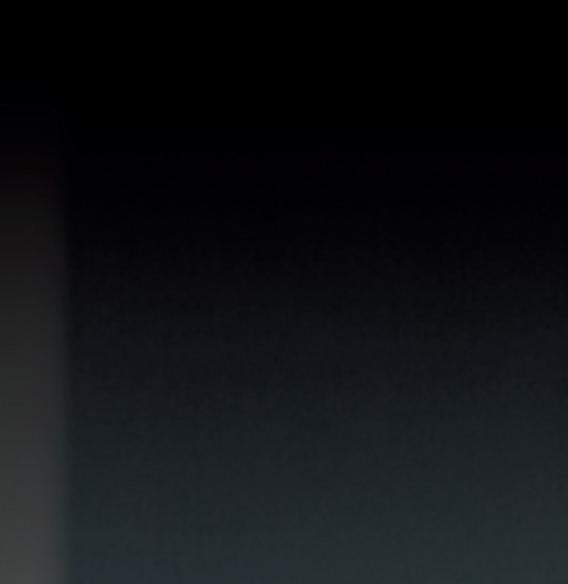
9 minute read
OPEN CHANGE? TO
PSD2 hasn’t unlocked quite as many doors in Europe as its architects hoped. But Nikolaj Hartvig from Neonomics and Tom Wijnen from Worldline – the first ‘pan-European pure PSD2 API providers’ – are optimistic it can still
Maybe when UK neobanks
Starling and Mambu frame open banking as too slow-burn, it’s worth taking with a pinch of salt. These are, after all, firms with a commercial interest in pushing regulators towards faster adoption of open finance and, ultimately, open data. But when the European Commissioner for financial services speaks the same rhetoric, it’s clear that something’s off.
In March, Mairead McGuinness updated the European Parliament on the development of open banking across the bloc. "To say that it hasn’t reached its potential is rather an understatement,” she admitted. Her keynote came more than five years after the implementation of the revised Payment Services Directive (PSD2), the EU directive that paved the way for member states to produce their own open banking legislation.
Despite remaining clear frontrunners in the race towards open finance, Europe’s open banking adoption figures leave much to be desired. While there is no central authority regularly gathering user figures, a widely recognised study from 2021 found just five per cent of consumers in the EU were using open banking. Growth charts feature linear, not exponential curves.
McGuinness went on to highlight the challenges facing open banking across the bloc. “The technical infrastructure for sharing data just isn't in place,” she explained. “APIs vary hugely in quality and functionality, and they often cause open banking operations to fail.”
In hindsight, asking member states to draw up their own open banking legislation without providing them with technical standards was a recipe for interoperability headaches. But, on the plus side, where legislation fails, market-led innovation usually steps in.
Opportunity Knocks
Founded in 2017, a year before the implementation of PSD2, Neonomics has stepped into just such a role. The Oslo-based open banking disruptor provides a unifying API to overcome the problem of interoperability. Its presence is most concentrated in the Nordic markets, but across the continent, Neonomics’ API provides access to more than 2,500 banks and their 150 million customers.
Several reports have highlighted digitally advanced Norway, Sweden, and Denmark as the next centres of high open banking adoption. Sweden is home to Klarna, one of open banking’s most successful use cases, after all.
Norway, meanwhile, is home to Europe’s most digital-savvy consumers, with the continent’s highest internet penetration, at 98 per cent, and the highest digital banking penetration, with 95 per cent of 14 to 76-year-olds making use of one or more digital banking products.
firm now boasts 18,000 employees in more than 40 countries, including a generous spread across the whole of Europe.
The partnership, which will pool both firms’ technical expertise and continental reach, is explicitly geared towards driving open banking payments and the data aggregation services they make possible. Together, the two companies will be able to reach approximately 3,500 banks in 22 countries across Europe. Their objective is to become ‘the first pan-European pure PSD2 API providers’.
“The baseline of our collaboration is technical,” says Hartvig. “Our partnership is focussed on strengthening our joint open banking offerings across Europe, and building the foundation of a much more efficient payment infrastructure.”
Tom Wijnen, senior product marketing manager at Worldline, agrees. He’s joined Hartvig to discuss the future of an open banking project that has only been generating mournful mood music of late.
“In this market, our competitors are just passing through things: call an API, and pass it through,” says Wijnen. “That’s not the way that both our companies work. We work with normalised data, with unified APIs, which is of a much better quality than you see in the market.
Nikolaj Hartvig, Neonomics
Neonomics eyes a huge opportunity in open banking.
“I see the entire space as game-changing,” says Nikolaj Hartvig, Neonomics’ international business development director. “The efficiency that is being built today will underpin the financial services we take for granted tomorrow.”
In November, Neonomics announced it would be entering a partnership with Worldline, the global paytech leader and Europe’s largest payments provider. Following Worldline’s 2020 acquisition of Ingenico, its heft grew considerably. The
“With PSD2, every bank has had to expose their APIs to the market. But they do that in different ways; there is no standard. And so what we do, and what Neonomics does, is get that API from the bank, read that information, and put it in a data model, where you have just one label on the same data. So, we are actors in different parts of the continent, but we do have the same qualitative approach, concerning APIs.”
Wijnen alludes to the true potential of open banking. Without unified APIs and standardised, machine-readable datasets, players in the market are unable to aggregate data productively. If they can’t do that, they cannot produce the next generation of financial services that PSD2 promised back in 2018. These, as Wijnen explains, go far beyond traditional payments services.
“So, open banking has a payment service. People say, ‘yes, but it’s just another payment means – it’s next to cards.’ I disagree. With account-based payments, you can do things like buy now, pay later, and, giving one-time consent, you can have a future-dated payment, you can even brand your payment.
“The data-related use cases are interesting, too, because you can use the data that’s on an account to better profile a customer. And a lot of banks have very good banking apps, so they can create services for their customers around these open banking topics. The first examples are there, but it’s really very sparse.”
“I agree,” says Hartvig. “The topic here is personalised financial services, which is much more possible with open banking. Another topic could be security, or fraud in payments, and open banking is a great way to prevent this.
“But it could also apply to non-financial use cases, with the banks even playing a role in the integration of financial services into non-financial applications. And here the possibilities are endless and can offer great value to customers, while generating new revenue streams for banks. So there are a lot of possibilities.”
If that’s what the glass will look like when it’s full, perhaps it’s little wonder that stakeholders are so underwhelmed by the slow drip-drip of open banking use cases up to now. And while Worldline and Neonomics are well-positioned to help unify Europe’s banking data under their APIs, they can’t solve the continent’s data standardisation issues on their own.
The Next Generation
This summer, the European Commission will publish a new legislative package following its consultation on open finance – the step beyond open banking. The package is set to include a comprehensive review of PSD2 in order to decide whether the directive remains fit for purpose.
If the Commission hones in on interoperability, one option is that it will mandate a standard API, so that any update to PSD2 won’t be another directive, or PSD3, but a regulation, which might be touted as PSR1.
Another option is to develop a central independent body, modelled on the UK’s Open Banking Implementation Entity (OBIE), which is regarded as key to the UK’s leading open banking performance.
Open banking adoption in the UK quietly passed the seven million user mark in January, at a penetration rate of 16 per cent for businesses and 11 per cent for consumers. These figures are Europe-leading by a long way.
Recent research from Forrester shows that the UK’s open banking adoption rate matches the growth curve for mobile banking before it, which should encourage stakeholders across the continent.
The UK itself is consulting on its own ‘smart data’ legislation. John Fitzpatrick, who heads up the Smart Data Team at the Department for Business and Trade, recently emphasised the importance of ‘data interoperability between sectors’ as the country’s next step towards realising the benefits of open banking, open finance, and the broader promise of open data.
The resultant proposals are likely to resemble aspects of Australia’s Consumer Data Right, which was first implemented in banking but has subsequently rolled out to other, non-financial sectors.
Hartvig and Wijnen see these conversations as timely, but would stop short of a purely regulatory-driven approach. Instead, they’re confident that the market can work alongside regulatory bodies to develop API aggregation models like their own, which would drive conformity without forcing the banks to change tack through legislation.
“There are sometimes very good reasons to try to get some rules laid down between parties, so that everything works better,” says Wijnen. “The European Commission could try to stimulate those initiatives, to get participants motivated to work together on this groundwork of open banking because it’s really key that everybody starts working together in this
Choosing the stick over the carrot seems to have compelled banks to build APIs that target compliance, not ones that target the opportunities of open banking. The banks just aren’t wielding their influence to get the ball rolling on tighter collaboration and standardisation. And, without their input, it’s difficult to see how the ecosystem envisioned by Worldline and Neonomics could come about organically.
As Hartvig puts it: “The building blocks are there, but we really need to get the banks more involved.
“Engagement from the banks is really important, independent of the regulatory push. Banks are the only stakeholders that can influence the rest of the market so directly in moving it in a specific direction. And, the more that they embrace this change, and work more closely with the rest of us, the better off our customers will be. Competition will create better services across the board.”
Wijnen adds: “There are a few banks that are active, but a lot of banks are waiting. They are not motivated, they are not incentivised to really explore the opportunities of open banking. And that’s a key point that needs to change.” boosting financial inclusion was one of the key motivations for putting together PSD2, this finding is regrettable.
It’s unclear how banks can best be encouraged to muck in, especially if regulation remains off the table. Perhaps we’ll have to wait a little longer for a first-mover among the big banks in Europe, incentivised either by revenue lost to neobank competitors or revenue they decide they’re set to gain by plugging into the ecosystem.
Another of those motivations was to break the monopoly of the card providers over payments in Europe, encouraging competition and perhaps contributing to the development of a home-grown European payments alternative.
“Payments is dominated by cards, by the card schemes,” says Wijnen. “They have been there for decades, so the user experience is really good.
“From a payment perspective, open banking needs to be competitive with those experiences. My conviction is that the payment initiation service together with instant payments, could really become such a competitor.” ecosystem. And, I think, the regulator can play a role here.”
Hartvig agrees. “We are talking about open ecosystems,” he says. “In Europe, open banking requires collaboration between different stakeholders – the banks, the regulators, technology providers, the merchants, to name a few of them – in order to drive innovation and adoption.”
Happily, it seems that the European Commission is of the same mind. At the close of her speech, McGuinness acknowledged the risks of being too prescriptive on the forthcoming legislation, adding that ‘we want companies to work together, and work with us, as we develop them’.
Wijnen still has a warning for regulators. “They started with the PSD2 by saying, ‘you have to do this. It is mandatory to do this’. That is not a very good motivation.”
Cards Still King
Last year, a study from the Nicolaus Copernicus University in Poland found that the strongest correlations with open banking adoption across Europe were age and trust, with younger consumers, who had faith in the financial sector and its privacy and security protocols, most likely to engage with open banking.
As with so many other sectors, it may be the demands and expectations of Millennials and Gen Z – or the digitally advanced citizens of, for instance, the Nordic countries – that ultimately compel the banks to play a greater role in the ecosystem. The study also contained a disappointing note, concluding that ‘these services are not expected to improve financial inclusion in Europe’. Given that
Despite the gloomy pronouncements, the open banking forecast remains bright. A 2021 study from Juniper Research estimated that the global open banking sector is set to grow by 2,800 per cent, with Europe accounting for more than three-quarters of open banking payments globally by 2026.
In 2022, Allied Market Research predicted that the global open banking market would amass revenue of $123.7billion by 2031, up from $13.9billion in 2020. That’s a CAGR of 22.3 per cent, although analysts expect that figure to be higher in European markets.
As stakeholders wait this summer for a sense of Europe’s new regulatory stance, the continent’s financial institutions should perhaps focus on these promising forecasts, not the doomsayers.
PSD2 may indeed not have been perfect, but across the long arm of history, its light-touch, non-prescriptive approach may just be judged as the policy that gifted Europe a competitive head-start in the race towards open finance.
Want to mitigate the impact of incidents before clients come back to chase you?









Need to get a 360-degree view on payments and their context?


Want to enjoy instant access to transaction details?










